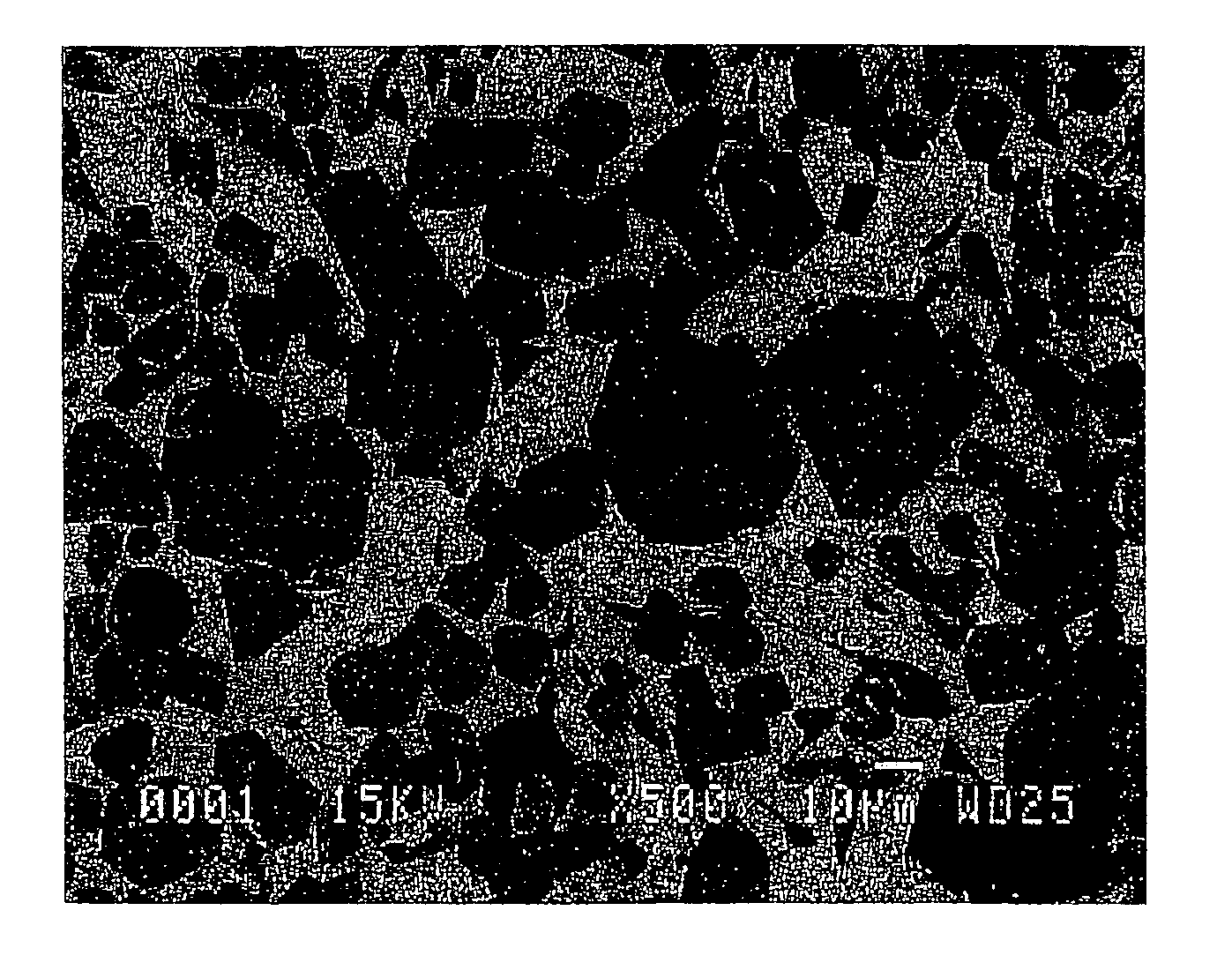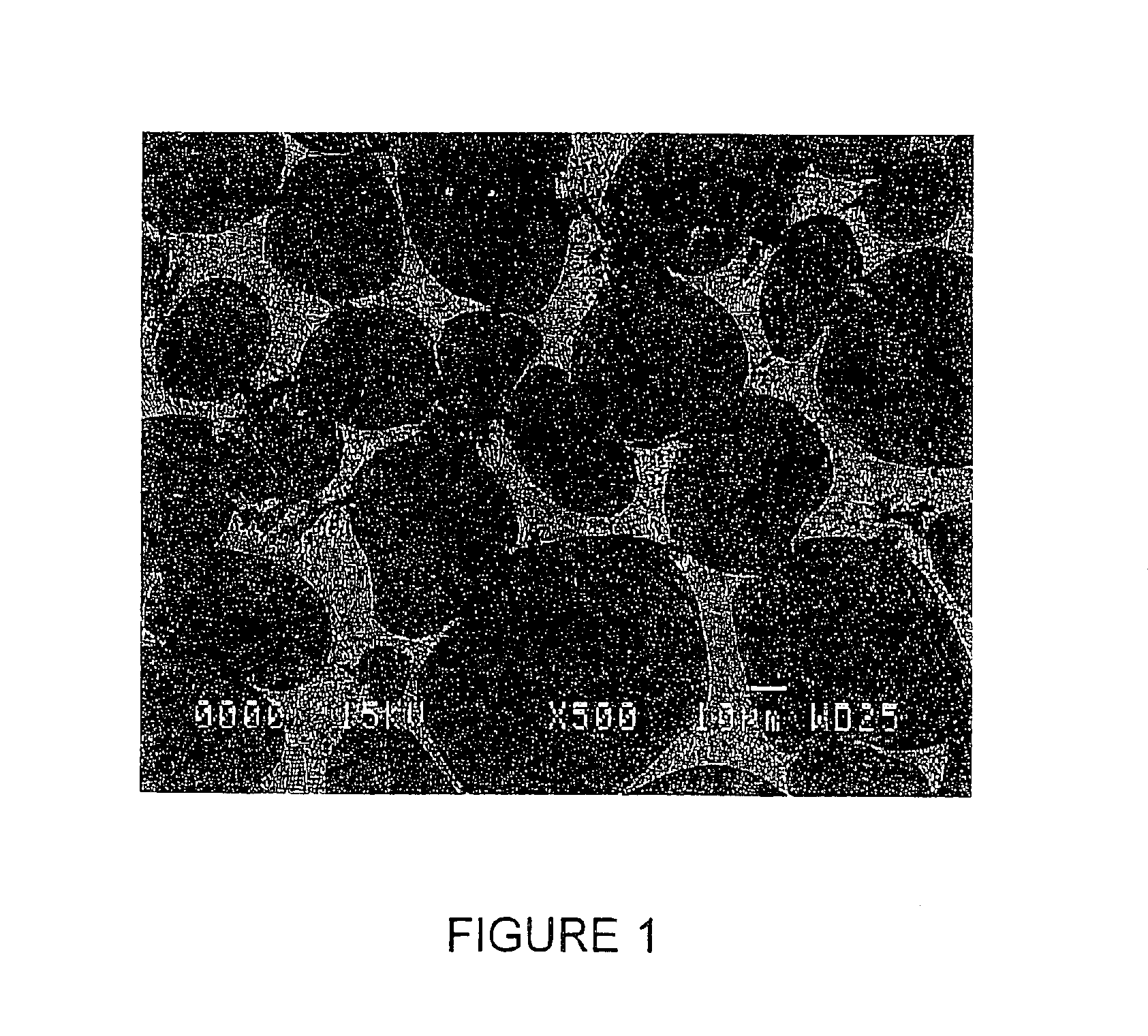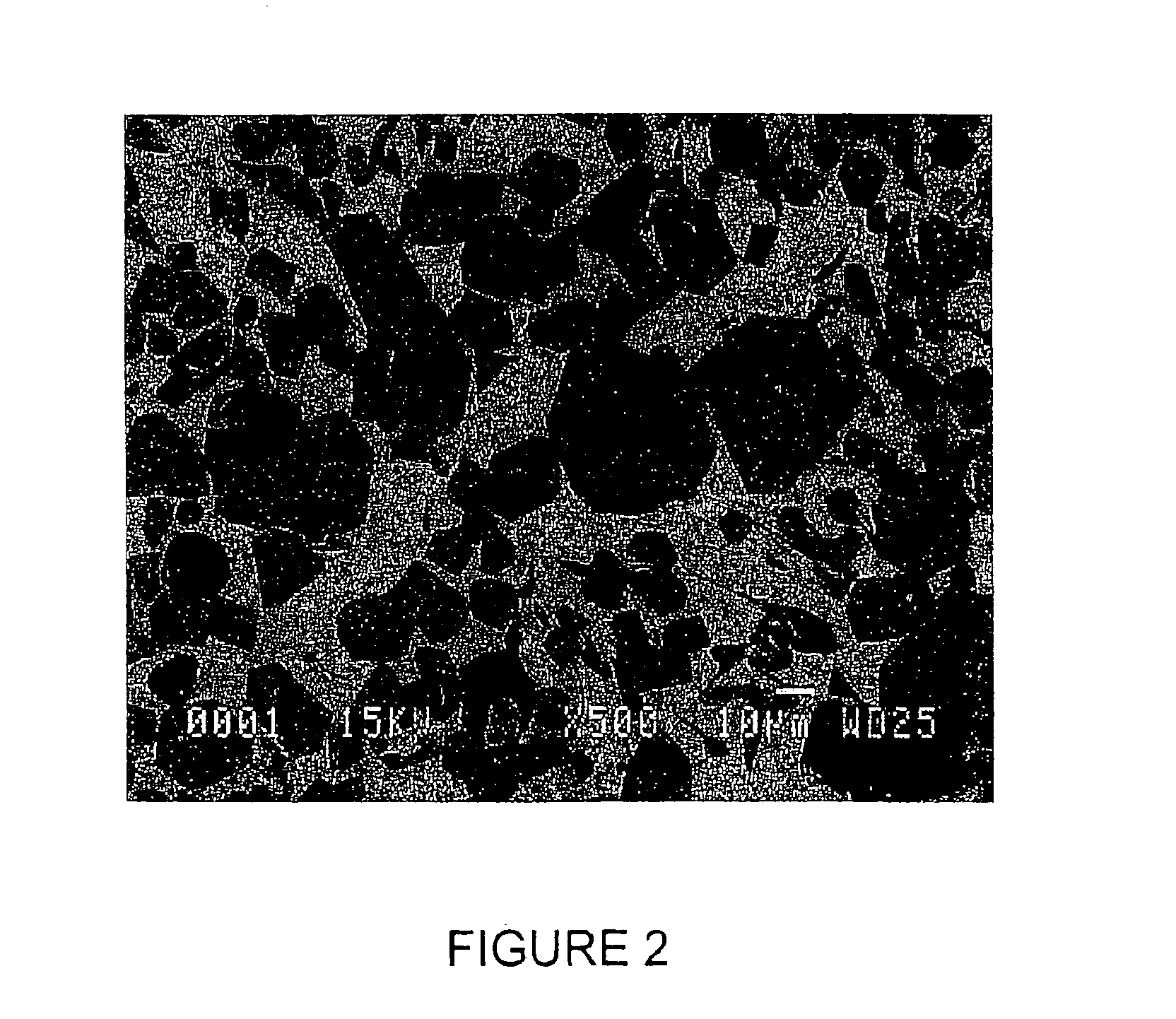Method for oxidizing treatment of steel plant slag to obtain cement-based materials
a technology of oxidizing treatment and steel plant slag, which is applied in the direction of cement production, manufacturing converters, discharged material handling, etc., can solve the problems of not being useful, alone, nor possibly mixed, and adverse mineral content for obtaining binder, so as to improve product properties and cost-effective
- Summary
- Abstract
- Description
- Claims
- Application Information
AI Technical Summary
Benefits of technology
Problems solved by technology
Method used
Image
Examples
examples 1 to 6
3. Examples 1 to 6
[0083]Raw steel industry slag have been treated through oxidizing at a pressure of approximately 10 bars, for 30 minutes, with lime additions and, optionally, alumina and silica additions according to the invention. The temperature at the start of the treatment is 1,650° C. (temperature of the slag at the outlet of the ladle).
[0084]The slag used, the addition proportions and the resulting mineral phases are shown in tables IV and V below.
[0085]
TABLE IVExampleSlag%Additionsnr.nr.slagCaOAl2O3SiO2139010——25899—236955——418911——518812——6182153—
[0086]
TABLE VMineral composition(% in weight)ExampleC2F / C4AF ferritenr.C3SC2SCSsolid solution% Fe2O3142——5834255——4124354——47204446—46225483—45226471—4820
[0087]FIG. 1 is a micrograph from example C8. The “beads” shown on this micrograph are C2S, the interstitial phase consisting in CS and ferritic
[0088]FIG. 2 is a micrograph from example 3. The “prisms” shown on this micrograph are C3S, the interstitial phase consisting in ferriti...
PUM
| Property | Measurement | Unit |
|---|---|---|
| Temperature | aaaaa | aaaaa |
| Temperature | aaaaa | aaaaa |
| Temperature | aaaaa | aaaaa |
Abstract
Description
Claims
Application Information
 Login to View More
Login to View More - R&D
- Intellectual Property
- Life Sciences
- Materials
- Tech Scout
- Unparalleled Data Quality
- Higher Quality Content
- 60% Fewer Hallucinations
Browse by: Latest US Patents, China's latest patents, Technical Efficacy Thesaurus, Application Domain, Technology Topic, Popular Technical Reports.
© 2025 PatSnap. All rights reserved.Legal|Privacy policy|Modern Slavery Act Transparency Statement|Sitemap|About US| Contact US: help@patsnap.com



